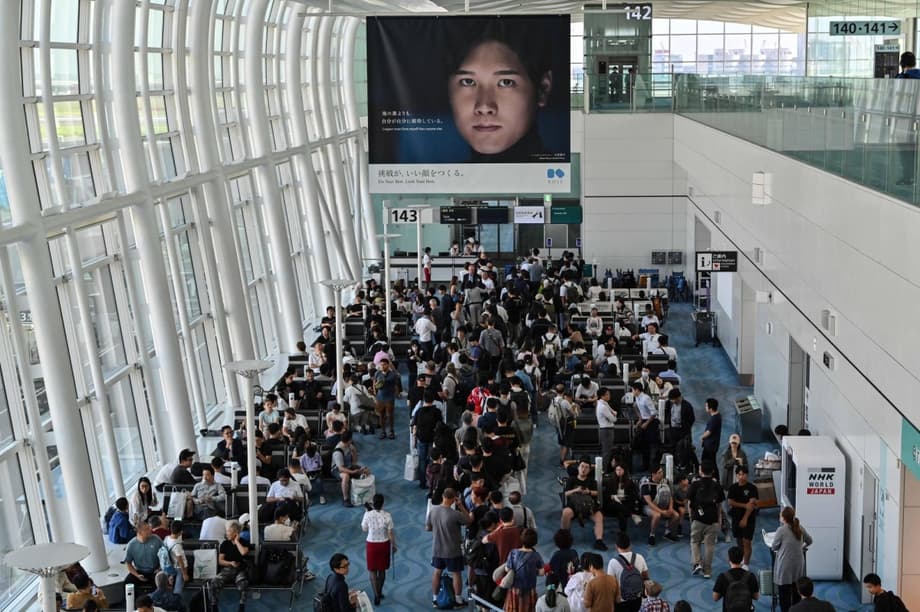Foreign workforce rises as Japan grapples with labor gaps
Japan has reached a new high in its foreign resident population, a reflection of both policy shifts and urgent labor needs. As of the end of June 2025, 3,956,619 legal foreign residents lived in the country, according to the Immigration Services Agency. That marks a 5 percent rise from the end of 2024, an increase of about 187,000 people in just half a year. Growth has been driven by a sharp uptick in workers holding the specified skilled worker visa introduced in 2019, which climbed 18.2 percent during the period, adding roughly 51,000 people and bringing the total to 336,196. The higher skilled No. 2 tier within that visa class grew from 832 holders at the end of last year to 3,073 by June, signaling a faster path to long term settlement for a small but growing segment of foreign talent.
- Foreign workforce rises as Japan grapples with labor gaps
- What the new figures show
- Why Japan is turning to foreign workers
- The visa picture
- Where people are settling
- Tourists and residents are different
- Illegal residents and enforcement
- Social services and daily life
- What this means for the economy
- At a Glance
Permanent residents remain the largest status group at 932,090, followed by 458,109 people in the category for engineers, specialists in humanities and international services, a broad track that includes interpreters and many white collar roles. The number of trainees in the Technical Intern Training Program, long criticized over working conditions, dipped 1.6 percent to 449,432 ahead of the program’s scheduled abolition in April 2027. By nationality, Chinese, Vietnamese, and South Koreans form the largest communities. Residents from Myanmar and Nepal have increased at a faster pace, up 19.2 percent and 17.2 percent respectively from the end of 2024.
The new record arrives as Japan faces one of the world’s most severe demographic squeezes. The number of Japanese nationals has continued to shrink, while the share of people aged 65 and over edges close to 30 percent of the population. Government population data have shown a persistent fall in total numbers, driven by record low births and high deaths, with only a handful of prefectures seeing any net growth. This demographic reality underpins a steady loosening of labor market policy and a broader acceptance of foreign workers across sectors that range from care homes to construction sites.
What the new figures show
The midyear snapshot points to three clear trends. First, long settled communities remain highly stable. The permanent resident figure, the single largest status group, rose modestly. This category includes many long stay residents who have built families and careers in Japan. Second, demand for white collar professionals is robust. The engineer and specialist category increased by 9.4 percent to 458,109, reflecting recruitment across information technology, finance, professional services, and language intensive roles.
Third, the fastest rate of change is in the specified skilled worker system. The No. 1 visa covers a range of practical jobs across industries such as nursing care, manufacturing, agriculture, food service, cleaning, and construction. It is time limited but designed for immediate labor shortages. The No. 2 visa requires advanced skills, allows longer renewals, and is a route that can lead to permanent residency. The jump to 3,073 No. 2 holders, still small in absolute terms, suggests employers are investing in retaining experienced foreign staff in core operations.
The composition by nationality also offers clues. Chinese residents remain the largest group, with Vietnam and South Korea following. The rise in residents from Myanmar and Nepal reflects both job opportunities and conditions in their home countries. Regional networks, language schools, and the growth of industries that hire entry level workers help explain these flows. As of July 1, the number of people categorized as illegal residents stood at 71,229, down 4.9 percent from six months earlier. Vietnamese accounted for 13,070, followed by Thais at 10,924 and South Koreans at 10,286.
Why Japan is turning to foreign workers
Japan’s workforce is shrinking. Businesses across the country say they cannot find enough people, especially in elder care, hospitality, food processing, logistics, and construction. An aging society adds pressure in care facilities and hospitals, while tourism has rebounded at speed, increasing demand for service staff who can work across languages. Manufacturers and building contractors face tight deadlines for major public projects and private investment, which further intensifies hiring.
Companies have raised wages in many sectors, yet they continue to struggle to fill roles outside big cities. Young Japanese graduates gravitate toward metropolitan areas and white collar careers. Regional economies, including factory towns and resort areas, now rely more than before on international recruits. This dynamic shifted the political calculus on visas. Policies that once focused on short stays now aim to provide clearer routes for longer careers and, in some cases, family life in Japan.
The visa picture
Japan’s specified skilled worker system is now central to the labor pipeline. The No. 1 category covers occupations that require practical skills and sector specific tests. It grants work rights typically for up to five years. Family accompaniment is limited, and the visa is intended to meet immediate shortages. The No. 2 category serves as a bridge to stability. It targets advanced workers who can perform at a higher level, often after proving themselves under No. 1, and it permits renewals with a path that can lead to permanent residency. The recent expansion of No. 2 into more sectors has made this track more attractive for employers who want to keep trained staff.
The Technical Intern Training Program, introduced decades ago to share skills with developing countries, will be abolished in April 2027. Policymakers plan to replace it with a new system that aligns training with real labor demand and offers a transparent path into the specified skilled framework. The government has also tried to diversify entry routes with measures such as a digital nomad visa aimed at high earning remote workers. Each move points to a gradual shift from purely temporary labor to a more structured approach that helps foreign workers build careers.
Where people are settling
Large metropolitan areas attract the biggest numbers. Tokyo consistently hosts the largest foreign resident population, followed by Osaka, Aichi, Kanagawa, and Saitama. Manufacturing hubs around Nagoya and the Kansai region hire workers for plant operations and supply chains. At the same time, the geography of settlement is widening. All 47 prefectures have reported increases in foreign residents in recent data releases, and some rural and resort municipalities are seeing double digit growth from a small base.
Schools and local services are adjusting. In Tokyo’s Edogawa Ward, Nishi Kasai Elementary has seen steady growth in children from overseas. Vice Principal Yuka Muramatsu described a new normal at the school as it expanded Japanese language support for students and families.
A child from overseas is a completely normal sight at our school.
Muramatsu said the school established a dedicated classroom for Japanese language instruction so that students who arrive midyear or with limited language skills can feel comfortable in class.
We hope that children who might have felt anxious because they do not understand Japanese also will be able to attend school without worrying.
Regional towns that depend on factories or tourism are also seeing change. Oizumi in Gunma Prefecture, long a home to auto parts manufacturing, has one of the highest shares of foreign residents among towns. Kutchan in Hokkaido, near the Niseko ski area, recorded a sharp rise in foreign residents in the past year as hotels, restaurants, and outdoor sports operators staff up for long seasons. These communities now offer multilingual information desks, cultural orientation sessions, and support for daily life.
Local leaders welcome the energy that new residents bring. In Miyagi Prefecture, Osaki City launched a Japanese language school to help students and adult learners settle and find work. Mayor Yasushi Ito set a clear expectation at the opening ceremony.
I hope you will play a part in revitalizing the local community after you graduate.
Experts say success depends on integration beyond the workplace. Masao Manjome, a professor at Tokai University who studies international labor migration, has urged municipalities to think about residents as neighbors, not only as workers.
Promoting a multicultural existence in regional areas is vital for preventing inequality and division. As well as accepting people here as laborers, detailed support must also be offered to them as residents, in such fields as child care, education and medical care.
Tourists and residents are different
Japan is also on track for record visitor arrivals in 2025. More than 21 million people entered in the first half of the year, and monthly totals through late summer continued to be strong. August alone saw an estimated 3.43 million overseas visitors, and entries from January through August totaled more than 28 million, according to estimates published by the Japan National Tourism Organization. If the pace holds, total visits could reach or exceed 40 million for the year. The tourism statistics are separate from the foreign resident population. They count short stays for leisure and business and do not equate to settlement.
High visitor numbers point to a fast recovering travel sector. Service businesses that cater to tourists, from hotels to retail, have become major employers for language capable staff. The distinction matters for policy. Tourists do not automatically earn work rights or residency, while resident visas are tied to jobs, skills tests, and, in some cases, family status. Official tourism data are available from the Japan National Tourism Organization’s statistical portal at this link.
Illegal residents and enforcement
While the legal foreign resident population grows, the number of people recorded as illegal residents has declined to 71,229 as of July 1, down 4.9 percent in six months. Vietnamese, Thais, and South Koreans make up the largest groups within this category. Japan revised its Immigration Control and Refugee Recognition Act in 2024. The updated rules aim to resolve long detention cases and speed up decisions on repeat asylum applications. By the end of 2024, authorities reported a small number of deportations under the new provisions, while several hundred asylum seekers were permitted to live in the community under supervision rather than remain in detention. These steps are part of a broader attempt to balance border control with humanitarian considerations.
Japan also added a complementary protection pathway in late 2023 for people fleeing conflict who do not meet the strict criteria for refugee status. Ukrainians have been the largest group admitted under this measure. The presence of people admitted for humanitarian reasons remains a small share of the foreign resident population, but it marks a policy shift toward more flexible responses during crises.
Social services and daily life
Concerns often surface about welfare costs and pressure on local services. Recent academic research that examined a decade of national and prefectural data found that while eligible foreign residents use public assistance at higher rates than Japanese citizens, the overall fiscal impact is small. The study also reported no statistically significant link between increases in recent noneligible foreign residents and higher welfare expenditures at the prefecture level. This line of research suggests that growth in foreign residents is not straining Japan’s welfare system.
On the ground, many municipalities are adjusting to a more diverse population. Language education is expanding in public schools. Cities and towns publish guidance on daily life, trash collection rules, and safety in multiple languages. Tomisato in Chiba Prefecture, for example, created a life manner manual in English and Vietnamese to explain local norms. Gunma’s Isesaki City runs a support desk that answers questions in languages such as Spanish and Vietnamese. These tools help new residents navigate everything from renting to health care appointments.
Community support can keep families rooted. Day care access and after school programs help parents work full time. Employers that offer language training and career ladders retain staff longer. Local governments that partner with nonprofits for legal advice and cultural mediators reduce misunderstandings. These practical steps increase the chance that a foreign worker becomes a long term neighbor, which benefits schools, businesses, and tax bases.
What this means for the economy
Japan’s record number of foreign residents is closely tied to growth in service industries and steady demand in manufacturing and construction. More workers have helped reopen shops and hotels and have kept factories on schedule. In several regions, foreign residents are filling jobs that would otherwise go unfilled, keeping small businesses alive and supporting exports.
There are challenges. Language barriers slow training and reduce productivity at first. Housing in big cities is tight. Rural areas need transport and medical services that match shift work and family schedules. Worker protection also remains a priority. The plan to replace the Technical Intern Training Program aims to address exploitation concerns and to align training with real jobs. Employers that invest in safety, fair pay, and skills certification will likely find it easier to move workers from short contracts into specified skilled roles. That, in turn, creates a pipeline to the No. 2 visa and stable, experienced teams.
Japan’s population will continue to age for decades. The foreign resident population, now just over 3.95 million, is still a small share of the nation. Careful visa design, local integration support, and fair workplaces can make the current record more than a numerical milestone. It can be an engine for regional revitalization and a practical response to labor shortages that will not ease soon. For readers who want a broader picture of demographic trends, official statistics are compiled by the Statistics Bureau of Japan at its English portal.
At a Glance
- Legal foreign residents in Japan reached 3,956,619 by end June 2025, a 5 percent rise from end 2024.
- Specified skilled workers totaled 336,196, up about 51,000 in six months, with No. 2 holders rising to 3,073.
- Permanent residents are the largest group at 932,090; engineers and humanities specialists reached 458,109.
- Technical Intern Training Program trainees dipped to 449,432 ahead of the program’s abolition in April 2027.
- Top nationalities are China, Vietnam, and South Korea; Myanmar and Nepal residents rose fastest from end 2024.
- Illegal residents fell to 71,229 as of July 1, with Vietnamese, Thais, and South Koreans the largest groups.
- Tourist arrivals are on pace for a record year in 2025, separate from resident counts, with strong summer figures.
- Population aging and worker shortages are driving policy changes that create clearer paths to long term stays.












